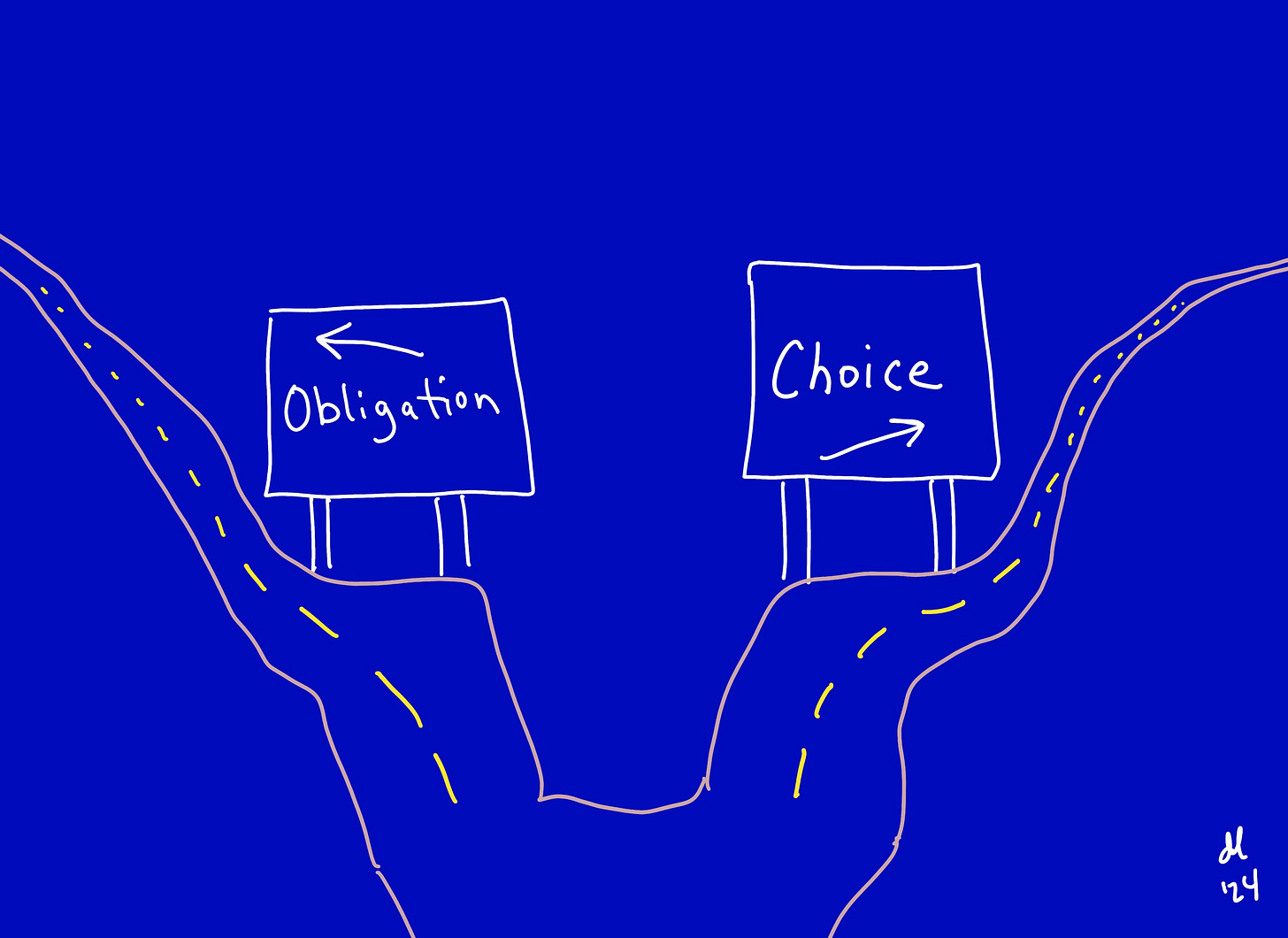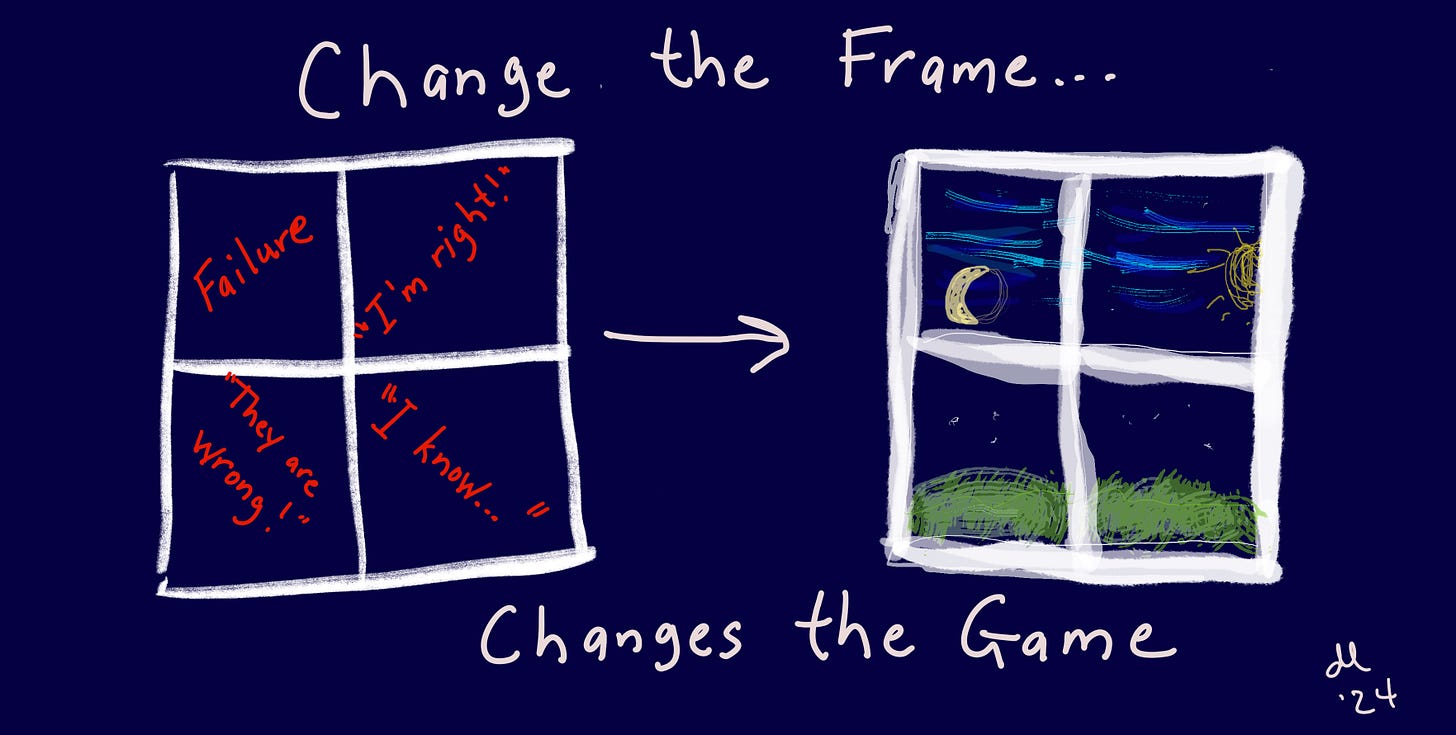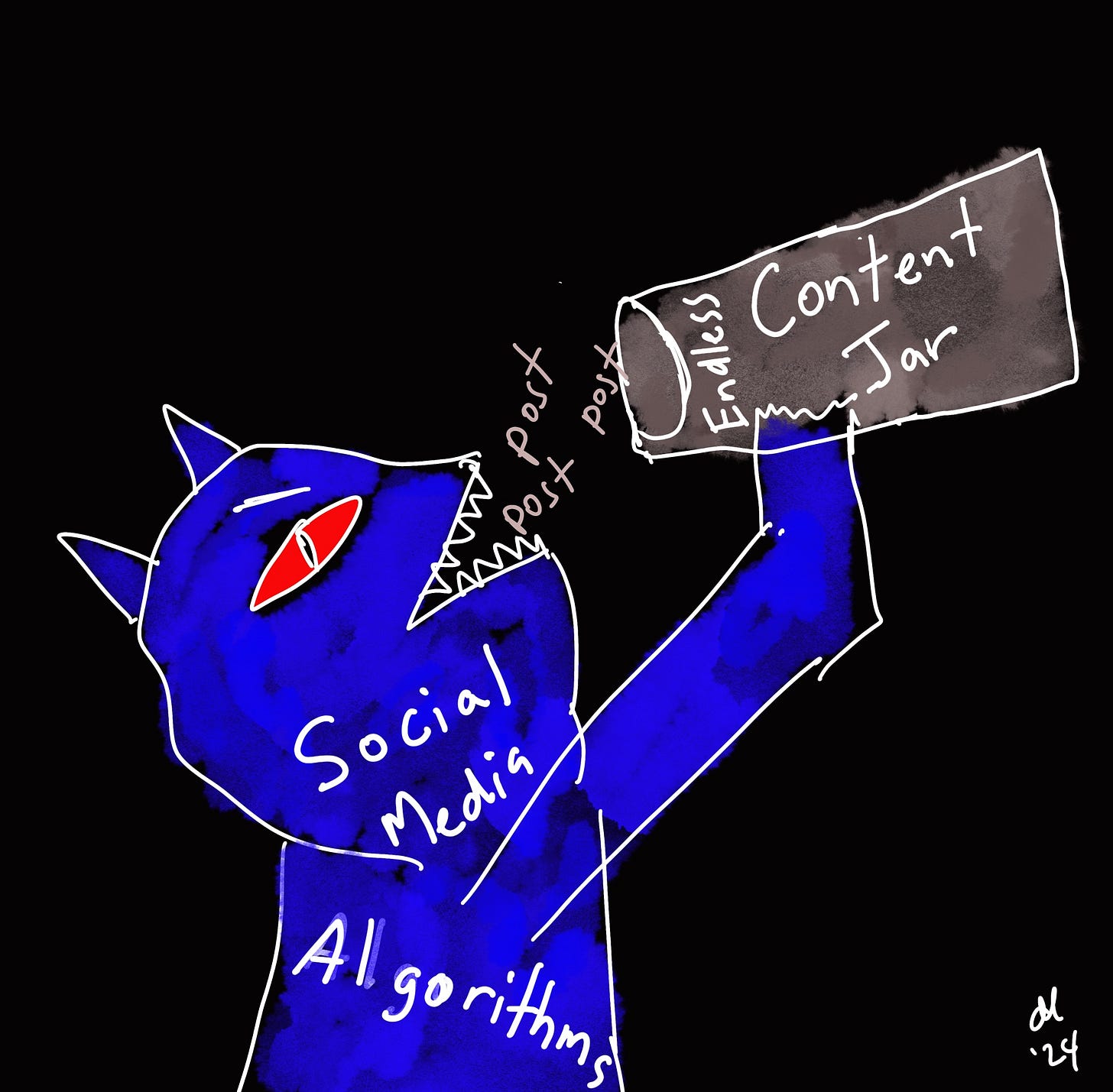How to Build Life-Centric Digital Businesses (Not Business-Centric Lives)?
Box Cutter Co. Free Issue #64
Have you heard of Swedish speed skater Nils van der Poel? He was a double gold medallist at the Beijing Olympics in 2022 and set Olympic and world records in the process.
He takes a Box Cutter-like approach to training and life. In many ways, he found a whole new audience after the Olympics through his writing.
van der Poel is now retired from speed skating but still holds world records in the 5,000 m and 10,000 m.
After the 2022 Beijing Olympics he openly published his training philosophy, plans, and approach to speed skating. It’s called:
One of my favorite lines from the free 60 pg e-book:
To me speed skating was just a one legged squat, repeated over and over during maximum heart rate
When in doubt keep it simple (more below).
Nils called his Box Cutter-like approach “Going upstream”
I kept in mind that when I set out to break a world record, I set out to achieve what no one else had ever achieved before.
I understood that I would not fulfill that goal using means others had already undertaken. I didn't alienate myself, but I was a bit of an outsider sometimes. For the guy on the top of the podium is not like everyone else, and therefore he is by definition, an outsider.
Fortitude was key.
Indeed… and this is transferable to all sorts of things in life. Keep in mind ‘fortitude’ means “courage in pain or adversity.”
Going Upstream Against Expectations
In the speed skating realm, van der Poel’s approach was highly unusual. He pushed against long-standing traditions in the sport and did things differently (including publishing his training plans — usually deeply held like state secrets).
One highly unusual element was that his training schedule consisted of 5 days on then 2 days off.
“I almost always trained a 5-2 day training program. Training for five days and then resting for two days. My rest days were usually during weekends. In that way, I could spend the weekends doing fun stuff with my friends. Usually, I did not train at all during rest days. I rested both my mind and my body.
However, if my friends wanted to go alpine skiing or go for a hike, I would join them. But I didn’t perform any intended active recovery. I tried to live a normal life.”
His philosophy?
“Creating meaning and value in life outside of the speed skating oval helped me get through tough training periods…
…In the long term, the meaning I created apart from my sport made me like my sport more, because suddenly it enriched my life rather than limiting it.
It also made me more determined to work hard, because training was not my last resort, it was my voluntary choice endured at my own conditions.”
Such an important (and simple recognition) — voluntary choice. I’ve been thinking about this in the realms of The Creator Economy… writing and publishing regularly… practicing in public, etc.
Keep it Simple, Stupid
One of my favorite sections in the book
My training program was very simple and therefore very robust.
It was cheap and reliable. Not fancy nor extraordinary. I tried not to involve things that I could not control. I did not become reliant on equipment that I could not easily access.
I did not make plans that I did not understand. I did not follow a culture of buying a bike too expensive to bring about in the rain.
To me, speed skating was just a one legged squat, repeated over and over during maximum heart rate. It was all just very simple and I kept it that way
One of his highly unusual training tactics (for speed skating) was heavy-duty aerobic training. In the early part of his training season he bicycled 5-7 hours per day over 5 days — aiming for 7-hour rides on the first three days and 6-hour rides on the next two days. Then 2 days of rest.
His theory was that any off-ice skating training actually “contaminated” his speed skating technique (e.g. inline roller skating or otherwise).
There is much that can be learned from reading van der Poel’s short book (and well beyond training for elite speed skating).
Defining Success?
Last month, April, marked two years of me walking away from career-climbing corporate ladders, endless pointless meetings, and a life that circulated around workplaces and career, office hours, and 3-4 weeks of holidays per year…
The typical things like… pushing to ‘Fridays’ (TGIF) and dreading the office return which would build towards Sunday evenings.
And, thus, in early spring 2022, I walked out of a corporate public sector office (excellent salary and benefits — I’d even extend to suggest overpaid) vowing to design a life that would never require me to be in that type of setting again.
Plus, we were in a situation where our household had to design life and lifestyles around work. We wanted something different. Very different.
Such as, designing businesses and work around the type of lives we wanted to be leading, not vice versa.
van der Poel concludes his book with some great sentiments:
I consider success to be measured by means of playing, and not by margin of winning.
It is the strive for excellence, the sharing of love and the ability to inspire others to do the same, that to me above all, defines an athlete's success.
The job is to lead the way by leading yourself.
Take out “an athlete’s” in the second to last sentence — and you have a pretty decent philosophy for a creative life.
How little is enough? How much is too much?
The phrase “how little is enough?” is an approach van der Poel used for things like stretching and core training. Some of what he deemed non-essential, and often the ‘easier’ components within a training regiment.
His theory was that many athletes wasted time and energy on these to the detriment of more important things like building aerobic capacity. His heavy-duty aerobic training (e.g. biking) then translated into holding higher skating speeds (and exertion) over a longer period (like the 12-13 mins of a 10,000 m race).
The other critical piece of van der Poel’s approach is how in tune he stayed with his body and mind — adjusting approaches as needed. For example, he shares his alcohol drinking was “like any 25-year-old” and how he also adjusted this to meet his sleep needs.
I’ve been reflecting on van der Poel’s manifesto recently. I’d come across it about a year ago. And, for whatever reason it popped back into my mind recently. I went online to find it and read it again.
In April, I hit two years of being free and clear of toxic workplaces and institutions — plus writing and publishing online — building businesses of our own (both my wife Lisa and I).
The Box Cutter Co. Journey
Since November of 2022 (about 7-8 months after walking from my career), I’ve published over 60+ Box Cutter Co. issues. These have been written and posted weekly.
A few months back I added The Soul-preneur Series.
I was on a writing tear for about 12 months. Much of it ‘building in public’. I posted nearly daily on LinkedIn, X (Twitter), and regularly posted stories on Medium (to mention a few).
I secured ghostwriting and other writing contracts and projects. In some months, I wrote and published over 100,000 words.
Then in late February and March, I slowed the online production for my own writing projects… the practicing in public.
Projects for clients picked up in January. My part-time faculty work (on the side) picked up. I agreed to be a coach with one of our teen’s sports teams (3 practices per week and multiple weekend tournaments). Business financials needed to be organized and taxes filed.
I simply leaned into considerations of ‘how little is enough?’ and ‘how much is too much?’
A simple leaning into the ever-present reality of Change and recognizing times of slower ‘production’ are… Just Fine.
Fallacies in Digital Writing Businesses
Writer, thinker and provocateur Nassim Nicholas Taleb wrote about the “Swimmer’s Body Fallacy” related to his own flawed view — thinking if he just swam enough laps he’d develop a body like an Olympic swimmer.
It’s a logical error occurring when people confuse selection factors with results.
It refers to a mistaken belief that the physiques of elite swimmers are the result of their training (e.g. endless laps), rather than recognizing those who have a natural predisposition for a swimmer's body are more likely to become successful elite swimmers.
Here are key aspects of the swimmer's body fallacy:
Confusion of Cause and Effect: Mistaking a result for the cause. For instance, believing that swimming will give you a swimmer's body, rather than understanding those with certain body types are more likely to excel in swimming.
Selection Bias: Ignoring the fact that individuals with certain inherent characteristics are selected for specific roles, making it seem as though the role itself is responsible for those characteristics.
Overlooking Natural Advantages: Failing to recognize that people who succeed in particular fields often have innate advantages or predispositions that contribute to their success.
And it translates to other contexts, such as:
Education: Assuming that attending an elite university makes students successful, without considering the university admits students who are already high achievers.
Fitness: Believing that following the workout regimen of a bodybuilder will yield the same physique, without accounting for the individual's genetics and natural muscle structure.
Business: Assuming that adopting the strategies of successful entrepreneurs will guarantee success, without considering the unique talents, opportunities, and circumstances that contributed to their achievements.
I have seen this regularly over the past 18-24 months in the online realm — even subscribed to it myself.
If you spend some time researching online to find successful ‘Creators’ in The Creator Economy. Finding the successful ‘digital writers’ — it doesn’t take long to build a list (a relatively small one).
Which plays into what’s called “survivorship bias” and is related to “swimmer’s body fallacy”.
Survivorship bias occurs when people focus on successful outcomes of a process while ignoring the many failures that could provide a more accurate perspective. This bias leads to an overly optimistic view of the situation because the failures are not visible or considered.
X (Twitter), Medium, LinkedIn, etc. profile and circulate the ‘success’ stories of those in the Creator Economy. Because that’s how social media algorithms work (in a simplified sense). They continue to circulate more broadly the posts that are getting more attention (likes, comments, re-posts, etc.).
But, just because something has lots of likes is not necessarily an indicator of ‘quality’. This becomes, even more the case, when those that have many ‘followers’ receive high traffic on social media posts, and then promote a strategy saying “Go engage, like, and comment on posts of successful creators so that you can gain more followers”.
And thus a rinse-and-repeat mentality and algorithm-feeding process continues indefinitely.
As a result, what do ‘creators’ and ‘digital writers’ earlier in their journey do?
Emulate the bigger creators. Follow their strategies and advice. Thinking that if they/we do this, we will achieve similar results. Unfortunately, it supports at least two logical errors — survivorship bias and swimmer’s body fallacy.
How to Avoid The Fallacies:
Analyze Selection Criteria: Understand the selection process and characteristics leading to success in a particular field. (More often than not in the digital Creator realm — it’s Time — often many years)
Look at the Bigger Picture: Consider all factors contributing to success, including environmental, situational, and chronological influences.
By avoiding the swimmer's body fallacy, and not falling to Survivorship Bias, you/we can make more informed and realistic assessments of what leads to success and the factors involved in achieving specific outcomes.
How to Skate… Or… Build Online
9.99 out of 10 experts will tell you don’t take the approach I did. Many will say start building up ‘on-the-side’ and keep building until your business can bring in the type of income your employment does.
It’s solid advice…
… that I didn’t take.
I jumped right in. Cold turkey. Left a salary of over $100,000 per year on the table and said “Time to figure this out”.
The key components of building a digital writing business have been providing writing (and other) services, while at the same time building and publishing online.
Digital writing alone — on Medium, here on Substack, and other places — does not bring in much income in the early days. (Granted, on Medium last month, I made over $400 US only publishing one story 🤷)
Yes, sure, I could follow many online gurus programs and design an automated social media posting schedule, engage and comment on all the big accounts (with empty bullshit comments), and relentlessly DM on X (Twitter) and LinkedIn.
I could design a “how to write on Medium” course. “How to write Killer Headlines” course. “How to grow on Substack” lead magnet and bla, bla, bla, bla…
But… I realized pretty early on that was not the approach I wanted to take. It felt akin to being back at a job.
How Little is Enough? And, How Much is Too Much?
When building online business, especially in the realm of digital writing, these questions are pivotal:
How little is enough?
How much is too much?
For example, focusing on simplicity and the right things at the right time — in a way that works for one’s self, NOT what others are saying or advocating.
Here's some thoughts on applying this to building a digital writing business:
1. Simplify Your Process
Van der Poel kept his training straightforward:
“My training program was very simple and therefore very robust. It was cheap and reliable. Not fancy nor extraordinary. I tried not to involve things that I could not control.”
In digital writing, this translates to focusing on what you can control: your writing quality, consistency, and engagement.
Avoid getting bogged down by overly complex tools or strategies that aren’t adding value. Use reliable, simple platforms and methods to build your business.
2. Push Against the Norms (e.g. Box Cutter approach)
The digital writing landscape is crowded with all kinds of conventional drivel advice. Stand out by finding your unique voice and perspective.
Consider this:
Content Overload: Instead of producing high volumes of mediocre content, focus on creating fewer, more thoughtful pieces that feel more authentic to you.
Marketing Hype: Avoid the trap of over-reliance on gimmicky marketing tactics. So much bullshit (on all platforms) about ‘growing followers’ and engagement, and subscribers, and so on. Filter it through your realities, not other’s (e.g., not falling to the swimmer’s body fallacy).
3. Balance and Sustainability
Van der Poel valued his life outside the skating rink and training, which in turn probably enhanced his performance:
“In the long term, the meaning I created apart from my sport made me like my sport more, because suddenly it enriched my life rather than limiting it.”
For digital entrepreneurs, this means ensuring your business (and business activities) are enriching your life rather than consuming it. Set clear boundaries to prevent burnout. Balance work with activities that recharge you. This sustainable approach will keep your passion alive and drive long-term success.
For me, in recent months, that has meant, for example, more time coaching and engaging in kids’ activities and less writing and publishing my own stuff.
4. Remember: “Voluntary Choice”
One of the most powerful aspects of van der Poel's philosophy was viewing training as a choice, not an obligation:
“Training was not my last resort, it was my voluntary choice endured at my own conditions.”
Try applying this mindset to your digital business and business-building endeavours.
Choose projects and clients that align with your values and passions. This voluntary choice will keep motivation and creativity fuelled, making your work more fulfilling and sustainable.
Some Practical Steps for a Box Cutter approach in building online:
Audit Your Workload: Regularly assess your tasks. Eliminate or delegate anything that doesn't directly contribute to your goals (which means regularly audit your goals too).
Set Boundaries: Try to get clear on how little is enough AND how much is too much. Ensure you have ample time for rest, downtime, and other life stuff.
Reflect Regularly: Take time to reflect on your work and its impact on your life. Adjust your approach as needed to maintain balance and fulfillment.
Are you building something that supports your life, or are you are designing your life around what you’re trying to build?
Simplify your processes, push against norms, maintain balance, and remember voluntary choice — it’s a game.
Over the past six months or so, I shifted my mindset and thoughts on “success”. It is far more now about playing in the realm, then it is about numbers (e.g. followers, subscribers, likes, etc.).
How about you?
Anything you might add? Take issue with?
That’s it for this Free Issue. The next Free issue of The Soul-preneurship Series will be out shortly.








👏